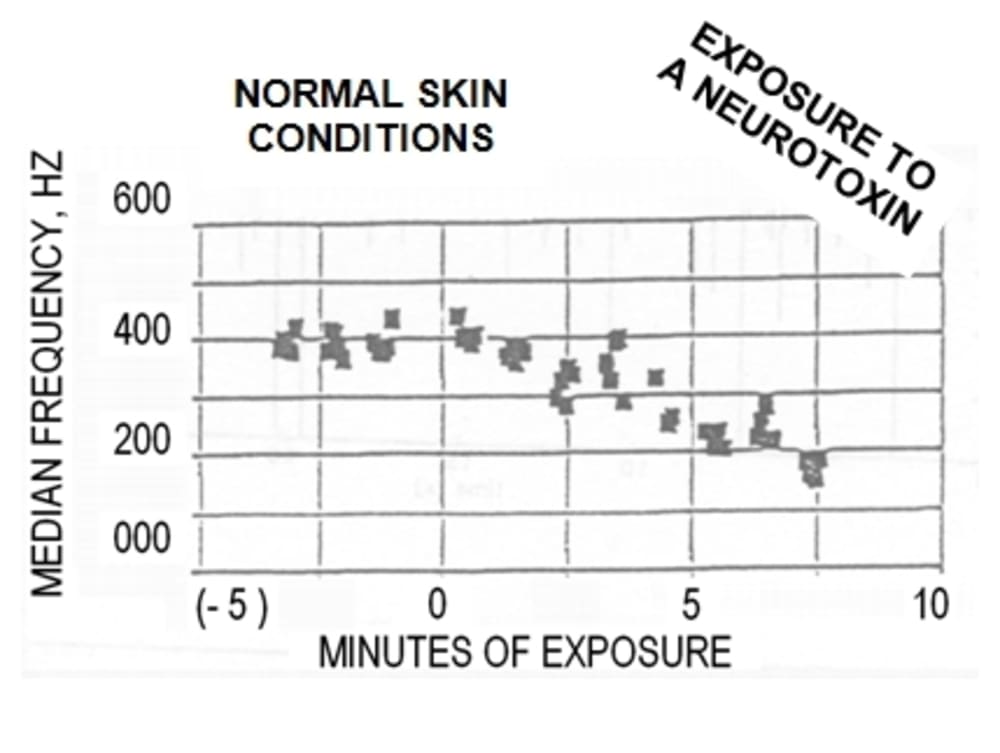With the world using more and more new new chemicals in the manufacture of commercial products and military weapons, and with the increasing pollution at waste disposal sites, it is critical to the health and safety of workers in these areas that improvements be made to the badges and sensors that are worn to prevent lethal exposures to nerve agents and neurotoxins.
Conventional safety badges and sensors are designed to be portable and be used for early detection and avoidance of harmful contaminants in the air and materials being touched or consumed. They do not monitor the wearer to determine whether undetected exposure did occur, leaving this to more sophisticated blood, urine, muscle and behavior testing at medical centers.
To enable early detection of workers who may have had an unrecognized exposure, or may have had multiple exposures to concentrations too low to be detected by conventional sensors, a new sensor called a Chemical Dosimeter has been patented . It monitors the nervous system of the wearer and is intended to be used in conjunction with the usual devices that monitor the environment around the worker.
The sensor of the Chemical Dosimeter is an electronic circuit resembling a Band-Aid that tapes to the neck (Figure 1)and transmits a radio signal when surface voltages on the skin (generated by nerve activity in the underlying muscles) resemble those caused by a nerve agent or neurotoxin. A radio receiver-transmitter on the belt then radios a base station for assistance and emits beeping sounds and a flashing light to alarm the wearer and nearby personnel (Figure 2).
In operation, two electrodes on the Chemical Dosimeter are securely taped against the neck before the worker engages in any activity involving neurotoxins (saxitoxin, botulinum toxin, tetanus toxin, tetrodotoxin) or nerve agents (tabun, sarin, soman, V-series).
The electronic circuitry then performs continuous monitoring of the skin voltage (commonly known as surface electromyography or EMG), performs trend analyses, and then compares the trends to a data base of known trends resembling exposure to nerve agents or neurotoxins. If a match is found, the circuitry initiates the alarm sequence.
An experiment performed in a medical research laboratory for Saratoxin exposure showed the degradation in median frequency of the skin voltage with time is a good indication of exposure(Figure 3). That experiment completed the proof-of-principle demonstration for the Chemical Dosimeter.
A significant effort remains to compile a data base for other toxins and agents. Once available, the manufacturing cost is ~$30 if the annual production rate approaches 100K units. Since the sensor would be reusable with a rechargable battery, replacable tape, and updatable memory, the market potential is global among military personnel, first responders to disasters, chemical workers and handlers, researchers, and pest exterminators.
Like this entry?
-
About the Entrant
- Name:George Kenneth Lucey Jr
- Type of entry:individual
- Patent status:patented








